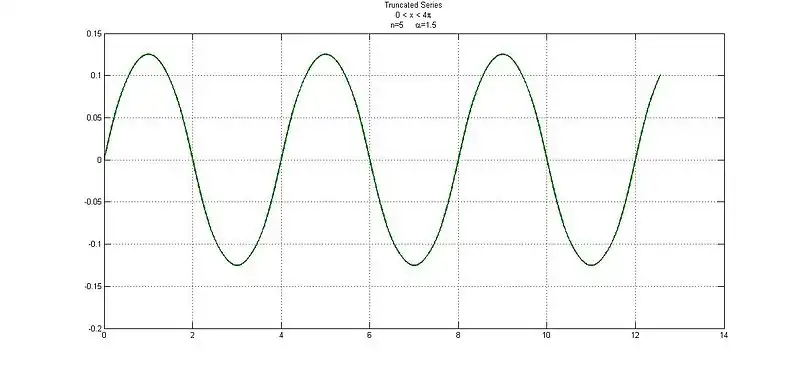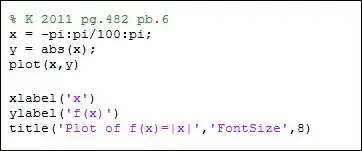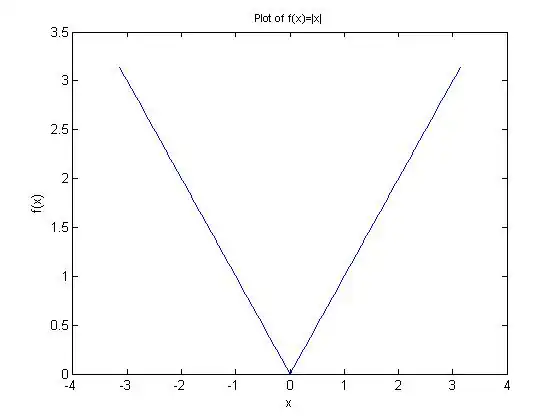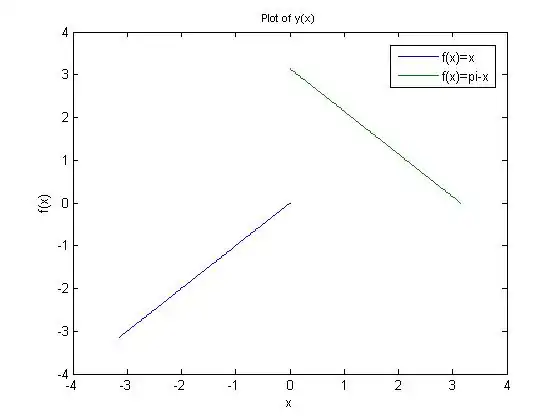University of Florida/Egm4313/s12.team11.R7
Report 7
Intermediate Engineering Analysis
Section 7566
Team 11
Due date: April 25, 2012.
R7.1
Solved by Andrea Vargas
Problem Statement
Verify (4)-(5) pg 19-9:
(4) for
(5) for
Solution
From the lecture notes on p.19-9 we know that:
(2)
(3)
Then, we have
Since the period of is and we know that , we can assume that for simplicity.
We can compute the result of the previous integral using Wolfram ALpha (Mathematica software). The following is the input given to the software:
int from 0 to pi sin(ax)sin(bx)
where a is and b is . The software generates the following answer:
Substituting for and :
We also know that where c is any integer. We can cancel any terms with or as they are equal to zero.
Then, we can verify:
(4) for
Similarly we can verify (5).
We have
Here, we will keep the integration boundaries as to be consistent with the problem statement.
We can compute the result of the previous integral using Wolfram ALpha (Mathematica software). The following is the input given to the software:
int 0 to L (sin(ax))^2
where a is . The software generates the following answer:
Substituting for :
We know from the previous explanation that .So,we can apply the same assumption as before that where c is any integer. This allows us to cancel any terms with as they are equal to zero.
Then, we can verify:
(5) for
R7.2
Solved by Francisco Arrieta
Problem Statement
Plot the truncated series with and for:
Solution
Using:
Then:
for all even values of j
Plugging back to the truncated series:
For :
When :

When :

When :

When :

--Egm4313.s12.team11.arrieta (talk) 06:20, 22 April 2012 (UTC)
R7.3
Problem Statement
Find (a) the scalar product, (b) the magnitude of and ,(c) the angle between and for:
1)
2)
Part 1
solved by Kyle Gooding
Scalar Product
Using integration by parts;
Magnitude
Angle Between Functions
The two functions are nearly orthogonal.
Part 2
solved by Luca Imponenti
Scalar Product
Since all exponents are even, everything in brackets cancels out
Magnitude
Angle Between Functions
Since the two functions are orthogonal
R7.4
Solved by Gonzalo Perez
K 2011 pg.482 pb. 6
Problem Statement
Sketch or graph which for is given as follows:
Solution
The MATLAB code shown below was used to developed the graph of :


K 2011 pg.482 pb. 9
Problem Statement
Sketch or graph which for is given as follows:
Solution
The MATLAB code shown below was used to developed the graph of the piecewise function :


Solved by Jonathan Sheider
K 2011 p.482 pb. 12
Problem Statement
Find the Fourier series of the given function which is assumed to have a period of . Show the details of your work.
Sketch or graph the partial sums up to that including and
Given:
Solution
The Fourier series of a function with a period of is defined:
Where:
This particular function given in the problem can be also defined in a piecewise manner over this interval, namely:
Calculating the first term :
Calculating the coefficient :
Using integration by parts with the following substitutions:
and therefore
and therefore
This yields for the integral:
Note that for all n = 1,2,3... : as therefore these terms are evaluated as zero, which yields:
Note that therefore:
To evaluate the term :
Note that for odd n values as
And that for even n values as .
Therefore, it can be concluded that for odd n values:
And for even n values:
Therefore, for the coefficient , all even terms will equal zero while all odd terms will have a multiplier of 2, this yields (for all odd n values):
Calculating the coefficient :
Using integration by parts with the following substitutions:
and therefore
and therefore
This yields for the integral:
Note that for all n = 1,2,3... : as therefore these terms are evaluated as zero, which yields:
Note that therefore:
Therefore there will be no terms in the Fourier representation.
In conclusion, the Fourier series representation for the given function is as follows:
A graph of the function, and the Fourier series for is shown below:

--Egm4313.s12.team11.sheider (talk) 06:00, 22 April 2012 (UTC)
K 2011 p.482 pb. 13
Problem Statement
Find the Fourier series of the given function which is assumed to have a period of . Show the details of your work.
Sketch or graph the partial sums up to that including and
Given:
Solution
The Fourier series of a function with a period of is defined:
Where:
Calculating the first term :
Calculating the coefficient :
Using integration by parts with the following substitutions for the integral :
and therefore
and therefore
Using integration by parts with the following substitutions for the integral :
and therefore
and therefore
This yields for the overall expression:
Note that for all n = 1,2,3... : as therefore these terms are evaluated as zero, which yields:
Note that therefore:
To evaluate the term :
Note that for odd n values as
And that for even n values as .
Therefore, it can be concluded that for odd n values:
And for even n values:
Therefore, for the coefficient , all even terms will equal zero while all odd terms will have a multiplier of 2, this yields (for all odd n values):
Calculating the coefficient :
Using integration by parts with the following substitutions for the integral :
and therefore
and therefore
Using integration by parts with the following substitutions for the integral :
and therefore
and therefore
This yields for the overall expression:
Note that for all n = 1,2,3... : as therefore these terms are evaluated as zero, which yields:
Note that therefore:
To evaluate the term :
Note that for odd n values as
And that for even n values as .
Therefore, it can be concluded that for odd n values:
And for even n values:
Therefore, for the coefficient , all even terms will equal zero while all odd terms will have a multiplier of 2, this yields (for all odd n values):
In conclusion, the Fourier series representation for the given function is as follows:
A graph of the function, and the Fourier series for is shown below:

--Egm4313.s12.team11.sheider (talk) 06:00, 22 April 2012 (UTC)
R7.5
Solved by Daniel Suh
Problem Statement
Consider the following,
with , and
1. Find the integration with the given data.
2. Confirm the results with Matlab's trapz command for the trapezoidal rule.
Solution
Part 1
Trigonometric Identities
Angle Sum and Difference Identities
Rearrange
Substitute and Combine
Utilize Trig Identities
Part 2
>> X = 0:2*pi/100:2*pi;
>> Y = sin(2*X).*sin(3*X);
>> Z = trapz(X,Y)
Z =
2.9490e-017